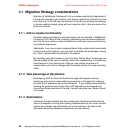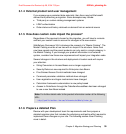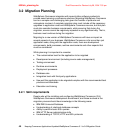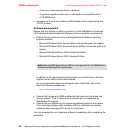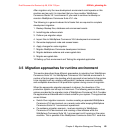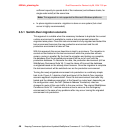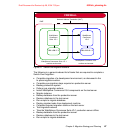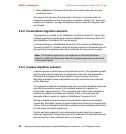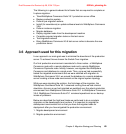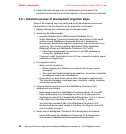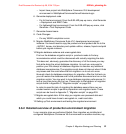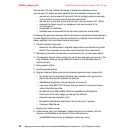
6320ch_planning.fm Draft Document for Review July 28, 2004 7:33 pm
46 Keeping Commerce Applications Updated WebSphere Commerce 5.1 to 5.6 Migration Guide
sufficient capacity to operate both of the instances (and software stacks, for
single node install) at the same time.
In-place migration scenario- migration is done on one system (but a test
server is highly recommended).
3.5.1 Switch-Over migration scenario
This approach is suitable when the necessary hardware to duplicate the current
runtime environment is available to create a test environment where the
migration takes place. Once this test environment is fully migrated and tested this
test environment becomes the new production environment and the old
production environment is taken off line.
With this approach the server downtime is kept to a minimum. The migration is
carried out and tested on the test environment while the production servers
remain running in parallel. By the time the migration and testing are complete,
the database from the migrated environment will be out of sync with the
production database. To reconcile the data, the production environment (still on
WebSphere Commerce Suite V5.1) must be taken off-line and the database
re-migrated based on the already learnt lessons. Once the migration is complete
the test environment will be switched-over as the production environment.
Turning the newly migrated environment into production is a relatively simple
task to do. Figure 3-1 depicts a high level layout of the Switch-Over migration
scenario approach implementation. Once the test environment has been fully
tested and the database reconciled, at the firewall or router level, depending on
the configuration used, the NAT (Network Address Translation) rules are
changed to route all the user traffic to the new runtime. The original WebSphere
Commerce Suite V5.1 runtime remains active to serve as the contingency
environment in the case of any problems after may occur turning the migrated
environment into production.
Note: This approach is not supported for Microsoft Windows platforms.



